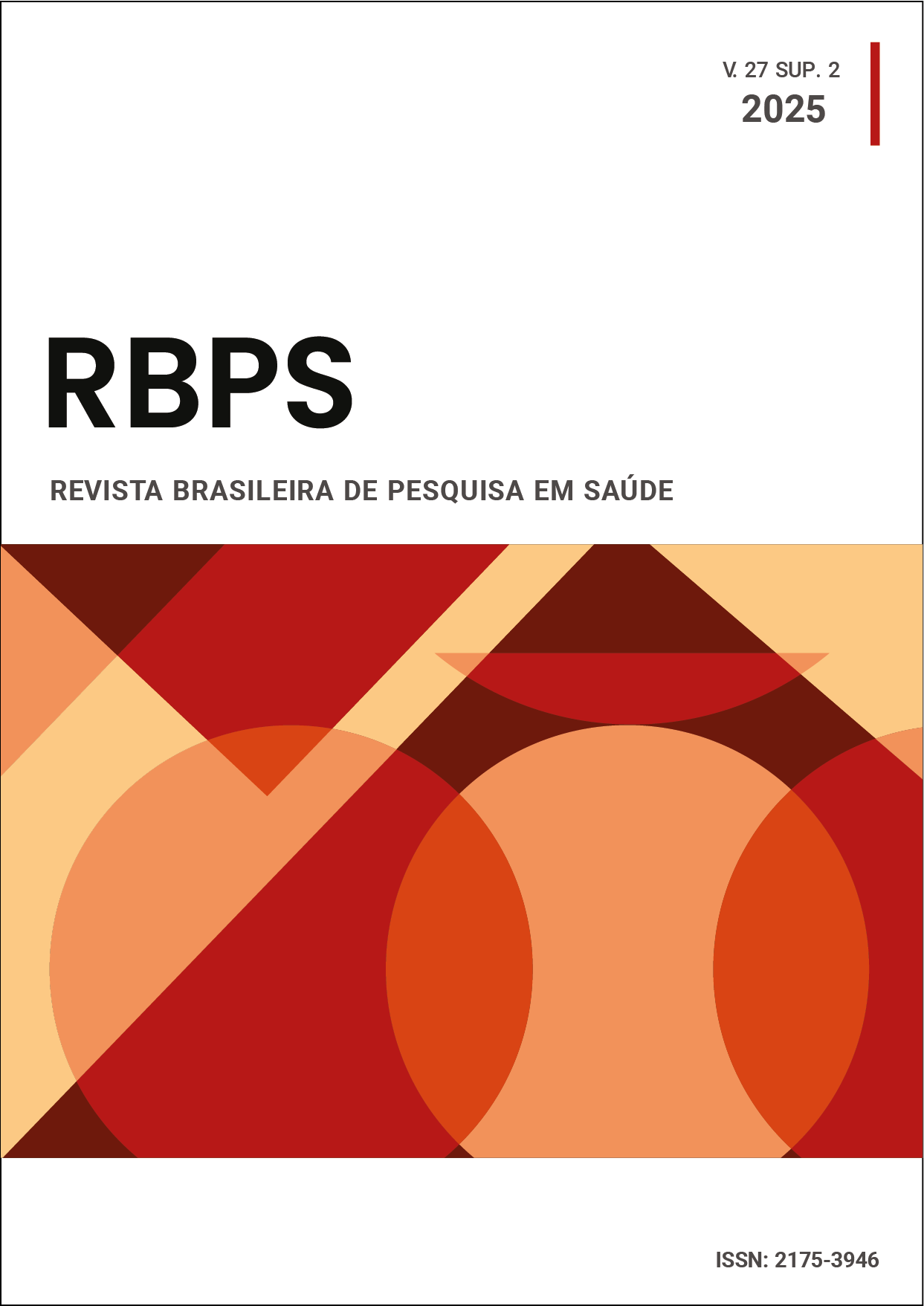Violence against women
a racial perspective
DOI:
https://doi.org/10.47456/rbps.v27isupl_2.48411Keywords:
Violence against women, Black population, RacismAbstract
Introduction: Lethal violence against women in Brazil presents significant racial disparities, disproportionately affecting Black women. This inequality has its roots in a patriarchal and slave-holding historical context, the effects of which continue to structure society and impact the lives of these women. Objective: To analyze the historical and social circumstances influencing the disparity in lethal violence between Black and white women in Brazil, focusing on structural racism and the development of public policies to address violence against women. Methods: A theoretical analysis was conducted based on a literature review and epidemiological data, considering the intersectionality of gender, race, and social context, to understand how structural racism contributes to the vulnerability of Black women. Results: The findings indicate that, despite legislative advances, violence against women persists and disproportionately affects Black women, both in domestic settings and within State institutions. Structural racism and racial stigmatization perpetuate the exclusion of these women, hindering their access to protection policies and justice. Conclusion: It is urgent to formulate intersectional public policies that address racism and gender inequalities, along with the training of professionals for humanized care. Only by recognizing these structural inequalities will it be possible to advance in preventing violence and promoting racial and gender equity.
Downloads
References
Souza NR, Hino P, Taminato M, Okuno MFP, Gogovor A, Fernandes H. Violência contra mulher parda e preta durante a pandemia: revisão de escopo. Acta Paul Enferm. 2024;37:eAPE00682. doi: 10.37689/acta-ape/2024AR0000682
Organização Mundial da Saúde (OMS). Uma em cada 3 mulheres em todo o mundo sofre violência [Internet]. OMS; 2021 [citado 2024 set 1–2025 jan 31]. Disponível em: https://brasil.un.org/pt-br/115652-oms-uma-em-cada-3-mulheres-em-todo-o-mundo-sofre-viol%C3%AAncia
Sousa LOD, Azevedo TAGD. A dupla vulnerabilização da mulher negra: uma análise sobre interseccionalidade e violência. Rev Gestao Soc Desenv [Internet]. 2024;10(1):e10559 [citado 2024 set 1–2025 jan 31]. Disponível em: https://indexlaw.org/index.php/revistagsd/article/view/10559
Costa CFDM, Dias Junior CM. Violência contra a mulher: um modelo de avaliação de desempenho de políticas públicas. Rev Katál. 2024;27:e95039. doi: 10.1590/1982-0259.2024.e95039
Viana DS, Costa MDSM. A cultura do patriarcado no Brasil: da violência doméstica ao feminicídio. Rev Educ Saude e Enfermagem. 2024;10(5):2829–47. doi: https://doi.org/10.51891/rease.v10i5.13935
Luz LEN. Masculinidade patriarcal: o que os homens pensam sobre a violência contra as mulheres nas relações conjugais? [Trabalho de Conclusão de Curso]. São Borja: Universidade Federal do Pampa; 2022 [citado 2024 nov 5]. Disponível em: https://repositorio.unipampa.edu.br/jspui/handle/riu/7459
Souza KBC, Tavares PCC. Crise do capital e exploração do trabalho em momentos pandêmicos: repercussão no Serviço Social, no Brasil e na América Latina. In: XVII Congresso Brasileiro de Assistentes Sociais; 2022 out 11–13 [Internet]. Disponível em: https://www.cfess.org.br/cbas2022/uploads/finais/0000000385.pdf
Luduvice P, Lordello SR, Zanello VM. Revogação das medidas protetivas: análise dos fatores e motivações presentes na solicitação da mulher. Rev Direito Práx. 2024;15(2):e67306. doi: 10.1590/2179-8966/2022/67306
Sousa RDV, Uchôa AMDV, Barreto MRN. Fontes de informação sobre a violência contra a mulher no Brasil. Serv Soc Soc. 2024;147(2):e-6628376. doi: 10.1590/0101-6628.376
Organização dos Estados Americanos (OEA). Convenção Interamericana para Prevenir, Punir e Erradicar a Violência contra a Mulher – "Convenção de Belém do Pará". Belém: OEA; 1994.
Nery MGD, Nery FSD, Pereira SRDS, Cavalcante LA, Gomes BM, Teles ACO, et al. Fatores associados ao homicídio de mulheres no Brasil, segundo raça/cor, 2016–2020. Cienc Saude Colet. 2024;29(3):e10202023. doi: 10.1590/1413-81232024293.10202023
Colling AM. Violência contra as mulheres – herança cruel do patriarcado. Rev Direito e Economia. 2020;8(Especiam):171–94. doi: 10.14295/de.v8iEspeciam.10944
Fórum Brasileiro de Segurança Pública (FBSP). 18º Anuário Brasileiro de Segurança Pública [Internet]. São Paulo: Fórum Brasileiro de Segurança Pública; 2024 [citado 2024 set 1–2025 jan 31]. Disponível em: https://publicacoes.forumseguranca.org.br
Canuto LT, Oliveira AASD. Métodos de revisão bibliográfica nos estudos científicos. Psi Rev. 2020;26(1):83–102. doi: https://doi.org/10.5752/P.1678-9563.2020v26n1p82-100
Silva AFD, Estrela FM, Magalhães JRFD, Gomes NP, Pereira Á, Carneiro JB, et al. Elementos constitutivos da masculinidade ensinados/apreendidos na infância e adolescência de homens que estão sendo processados criminalmente por violência contra a mulher/parceira. Cienc Saude Colet. 2022;27(6):2123–31. doi: 10.1590/1413-81232022276.18412021
Tilio R. Marcos legais internacionais e nacionais para o enfrentamento à violência contra as mulheres: um percurso histórico. Rev Gest Polit Publicas [Internet]. 2012 jun 30;2(1):68–93 [citado 2024 set 1–2025 jan 31]. Disponível em: https://www.revistas.usp.br/rgpp/article/view/97851
Pinto CRJ. Feminismo, história e poder. Rev Sociol Polit. 2010;18(36):15–23. doi: 10.1590/S0104-44782010000200003
Azambuja MPRD, Nogueira C. Introdução à violência contra as mulheres como um problema de direitos humanos e de saúde pública. Saude Soc. 2008;17(3):101–12. doi: https://doi.org/10.1590/S0104-12902008000300011
Kfouri CO. O direito e a desigualdade de gênero: uma análise histórico-legislativa da violência doméstica no Brasil. Rev CPJM [Internet]. 2023;2(Especial):127–51 [citado 2024 set 1–2025 jan 31]. Disponível em: https://rcpjm.cpjm.uerj.br/revista/article/view/175
Lisboa TK, Zucco LP. Os 15 anos da Lei Maria da Penha. Rev Estud Fem. 2022;30(2):e86982. doi: 10.1590/1806-9584-2022v30n286982
Cisne M, Santos SMM. Feminismo, diversidade sexual e Serviço Social. São Paulo: Cortez; 2018.
Nunes SDS. Racismo no Brasil: tentativas de disfarce de uma violência explícita. Psicol USP. 2006;17(1):89–98. doi: 10.1590/S0103-65642006000100007
Ribeiro D. Pequeno Manual Antirracista. São Paulo: Companhia das Letras; 2019.
Almeida SL. Racismo Estrutural. São Paulo: Jandaíra; 2020. (Coleção Feminismo Plurais)
Oliveira BMC, Kubiak F. Racismo institucional e a saúde da mulher negra: uma análise da produção científica brasileira. Saude Debate. 2019;43(122):939–48. doi: 10.1590/0103-1104201912222
Borges J. Encarceramento em massa. São Paulo: Pólen; 2019. 144 p.
Costa ALD, Silva BNRD. Até aqui nos ajudou um feminismo: violência contra mulher, política institucional e feminismos negros. Civitas. 2024;24(1):e45037. doi: 10.15448/1984-7289.2024.1.45037
Campos CH. Desafios na implementação da Lei Maria da Penha. Rev Direito GV. 2015;11(2):391–406. doi: https://doi.org/10.1590/1808-2432201517
Brasil. Ministério da Saúde. Saúde da mulher brasileira: uma perspectiva integrada entre vigilância e atenção à saúde. Secretaria de Vigilância em Saúde e Ambiente. Bol Epidemiol. Brasília: Ministério da Saúde; 2023.
Downloads
Published
Issue
Section
License
Copyright (c) 2025 Brazilian Journal of Health Research

This work is licensed under a Creative Commons Attribution-NonCommercial-NoDerivatives 4.0 International License.
Authors and reviewers must disclose any financial, professional, or personal conflicts of interest that could influence the results or interpretations of the work. This information will be treated confidentially and disclosed only as necessary to ensure transparency and impartiality in the publication process.
Copyright
RBPS adheres to the CC-BY-NC 4.0 license, meaning authors retain copyright of their work submitted to the journal.
- Originality Declaration: Authors must declare that their submission is original, has not been previously published, and is not under review elsewhere.
- Publication Rights: Upon submission, authors grant RBPS the exclusive right of first publication, subject to peer review.
- Additional Agreements: Authors may enter into non-exclusive agreements for the distribution of the RBPS-published version (e.g., in institutional repositories or as book chapters), provided the original authorship and publication by RBPS are acknowledged.
Authors are encouraged to share their work online (e.g., institutional repositories or personal websites) after initial publication in RBPS, with appropriate citation of authorship and original publication.
Under the CC-BY-NC 4.0 license, readers have the rights to:
- Share: Copy and redistribute the material in any medium or format.
- Adapt: Remix, transform, and build upon the material.
These rights cannot be revoked, provided the following terms are met:
- Attribution: Proper credit must be given, a link to the license provided, and any changes clearly indicated.
- Non-Commercial: The material cannot be used for commercial purposes.
- No Additional Restrictions: No legal or technological measures may be applied to restrict others from doing anything the license permits.






















